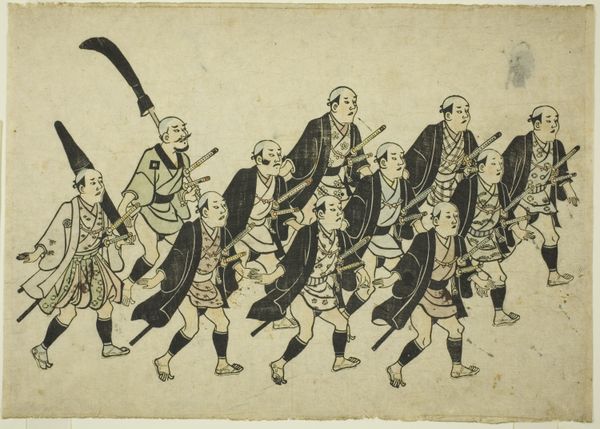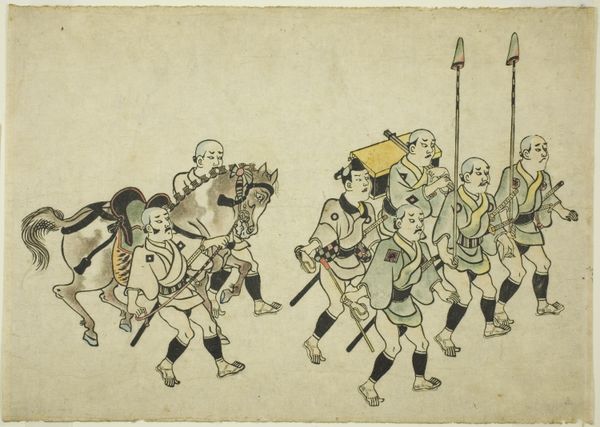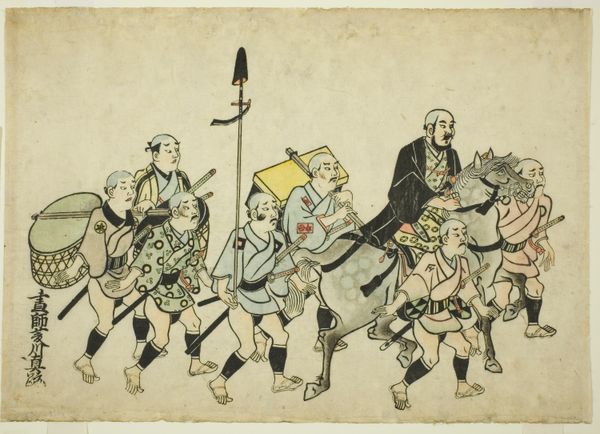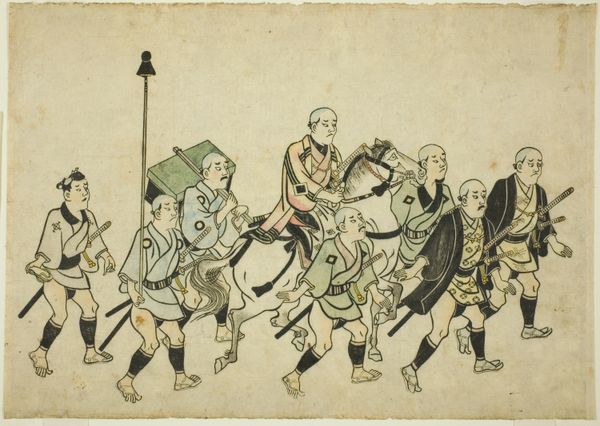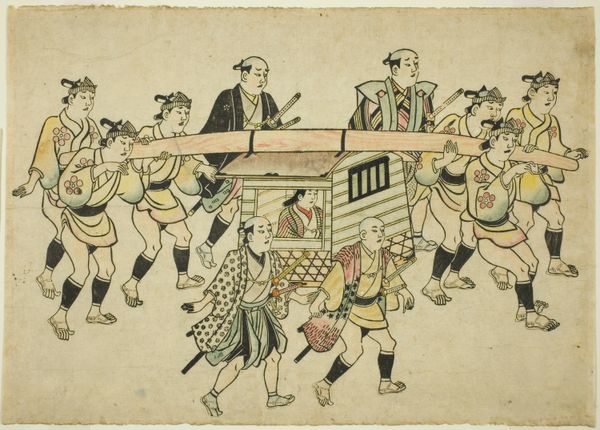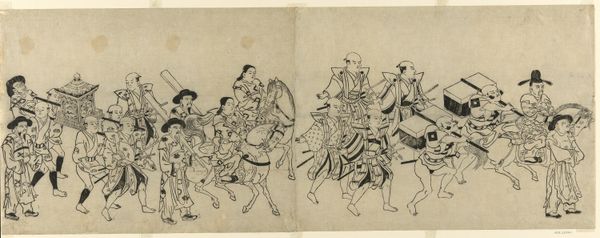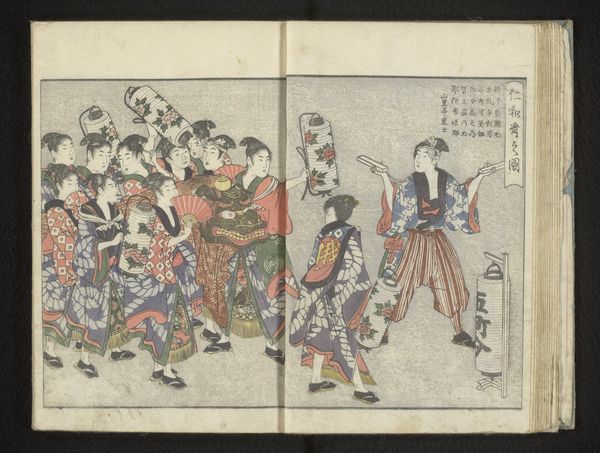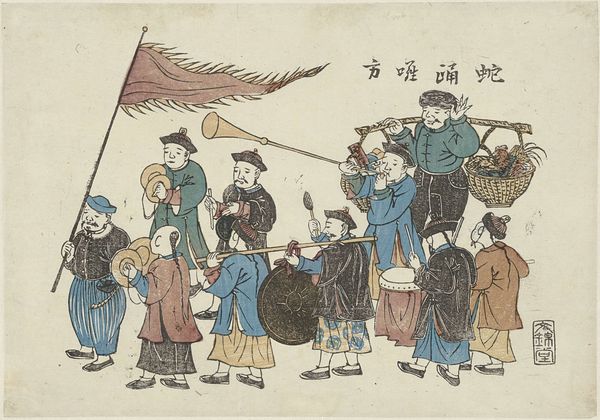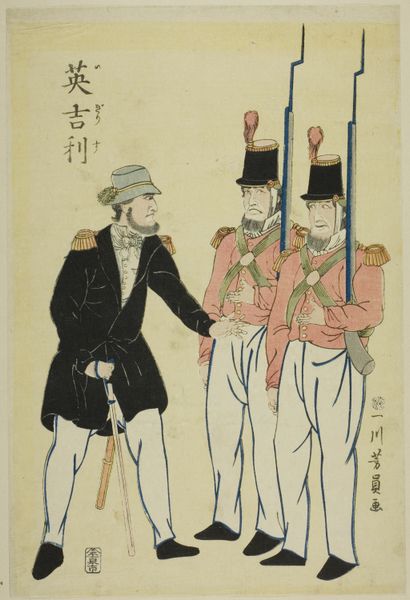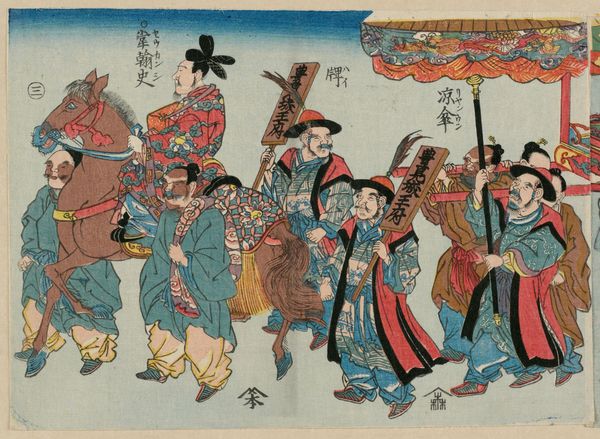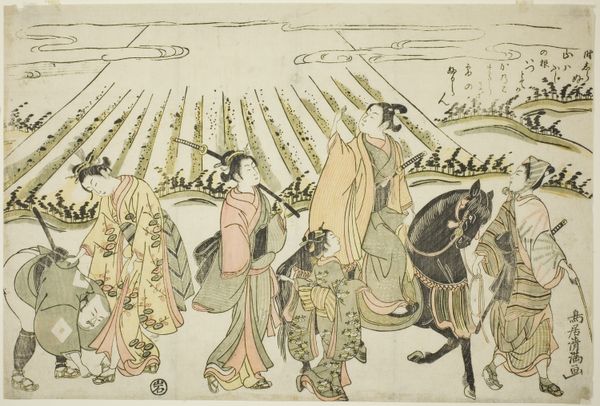
Procession of a Daimyo c. 1681 - 1684
0:00
0:00
print, ink, woodblock-print
#
narrative-art
# print
#
asian-art
#
ukiyo-e
#
figuration
#
ink
#
woodblock-print
Dimensions: 27.2 × 38.4 cm
Copyright: Public Domain
Curator: This woodblock print, titled "Procession of a Daimyo", dates to about 1681-1684 and is the work of Hishikawa Moronobu. You can find it here at the Art Institute of Chicago. Editor: Wow, they look…miserable! Is this what happens when absolute power needs a walk? Everyone just shuffling along, silently regretting life choices? Curator: It's fascinating, isn't it? Moronobu masterfully captures the ukiyo-e, or "floating world," aesthetic through the depiction of this elite procession. Notice how he utilizes a limited palette, emphasizing line and form to convey the dynamism of the scene despite the figures' weary expressions. Editor: The line work is indeed crisp and gives everything this really clean, stylized look. It’s almost like a snapshot of a mundane, behind-the-scenes moment. I wonder about the repetition – are we meant to see each person as an individual, or more like a component in this elaborate display of authority? Curator: I think it’s both, actually! Moronobu shows us the collective strength of the Daimyo's retinue, but if you look closely, each figure has slight variations in expression, attire, and even posture. Each person is carrying what appears to be all they have; sword and perhaps some water and clothing to arrive at their destination in top shape. The narrative art style draws you into imagining what each individual is feeling and contemplating. Editor: That makes sense. There is also something very modern about the way it suggests temporality by omitting much environmental detail and depicting many overlapping figures with abrupt ending points. The flatness really pushes the group forward in time and space like a single, continuous moving "blob" Curator: Exactly, he captures that moment perfectly and uses such stark techniques and I have to admit, the limited palette really does set the perfect somber mood. And they were a print. That means that many of these scenes existed and there may even have been different versions! Editor: I like imagining that each color choice, each slight alteration of line weight, became its own philosophical choice as well, that speaks across time and culture and allows us to witness not just history, but what it might feel like for that moment to happen! Thanks for this fascinating moment and conversation!
Comments
No comments
Be the first to comment and join the conversation on the ultimate creative platform.
